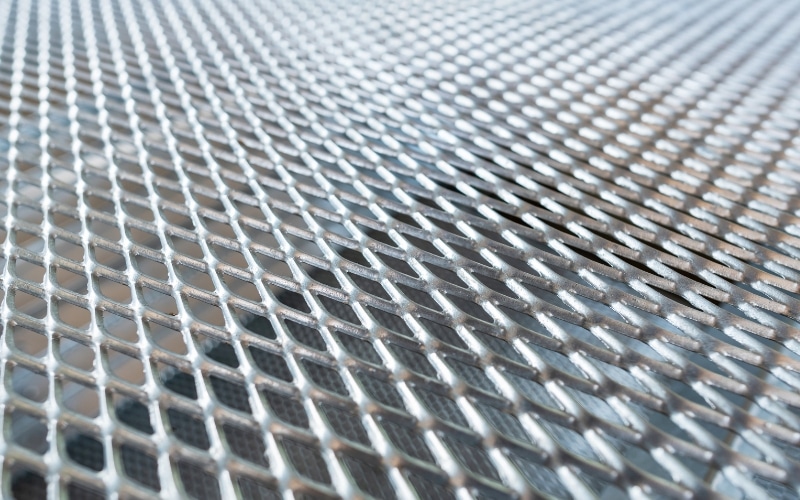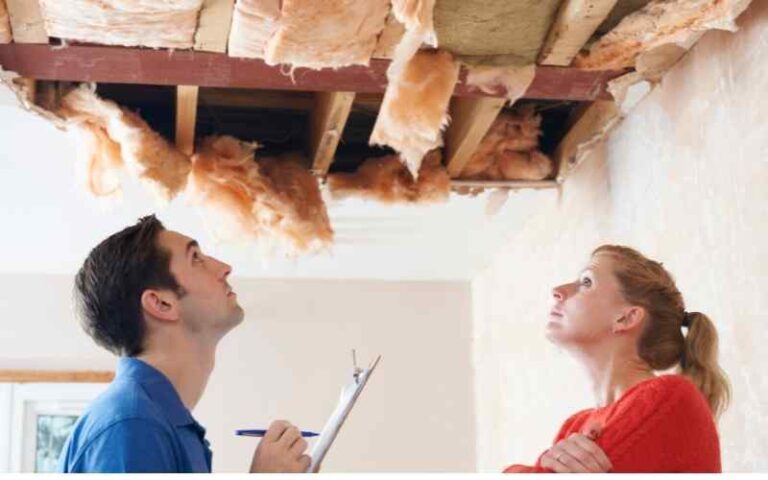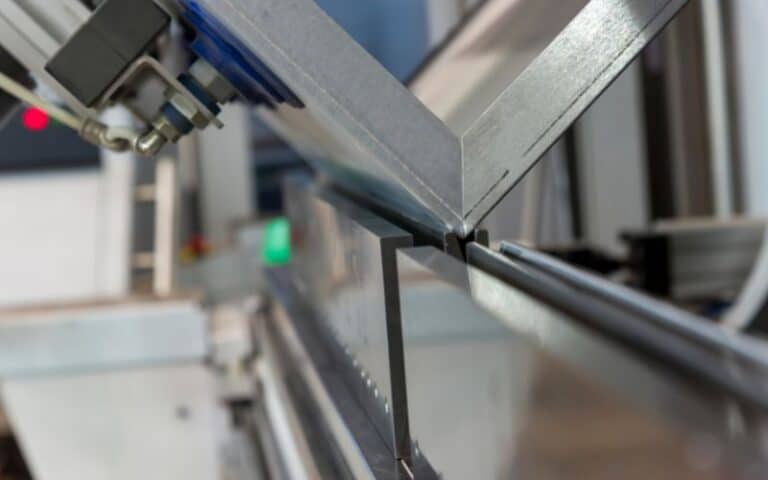Flattened, raised, or expanded wire mesh material often comes in handy in building projects. Contractors use the metal mesh for various things like building facades, walkways, and fences.
In addition, homeowners also use metal mesh for DIY projects like reconstructing broken drywall ceilings and walls.
You can use metal mesh to support the drywall ceiling or wall in your building. You can also use the metal mesh when repairing your walls and ceilings. Metal mesh is very flexible, and you can use it to achieve any architectural plan as far as the shape and design of the roof are concerned.
This article explains the use of metal mesh in drywall and how you can get rid of it.
Ready for a Roofing Quiz?
Why Are There Metal Mesh in My Drywall?

Contractors use metal mesh to hold drywall or cement in place, and they call the process stuccoing.
The metal mesh helps the plaster adhere to the wall and keeps the drywall from developing cracks.
Contractors like to use metal mesh in the junction between bricks and concrete and between concrete and drywall or bricks and drywall because the materials have different densities.
This difference in density makes the materials behave differently during thermal change; as such, the thermal change is likely to cause cracks in the wall. But metal mesh solves the problem.
Metal mesh is also flexible, so mounting it on any surface is convenient.
For example, contractors mount metal mesh on the wall before placing drywall, and the mesh enters the drywall with time.
If you remove a part of your drywall or replace it and find metal mesh, then the contractors who worked on your building use metal mesh to strengthen the drywall.
Also, metal mesh provides additional strength for the building. For example, if there is metal mesh supporting a drywall ceiling or wall, it will be stronger than a standalone wall.
Wire mesh also gives the building much-needed stability that would otherwise be lacking. That’s why contractors use metal mesh in cement floors and tunnel walls in addition to drywall.
How Do You Remove Metal Mesh in Drywall?
If you ever decide to remodel your home, you’ll have to remove the drywall and the metal mesh.
After removing the drywall and metal mesh, you can get to the wall studs to install a new finish or drywall in that part of the wall or the ceiling.
Remember that metal mesh is very sharp, so it’s dangerous to expose your skin when working with it. So, always dress appropriately.
Wear thick long-sleeved shirts, work boots and thick long trousers. Also, wear a pair of safety glasses or goggles and a respirator.
Ensure to cover the work area to avoid the stress of cleaning debris.
First, you’ll have to remove the drywall to expose the metal mesh before you can go about removing the metal mesh itself.
So, below is the process.
- Use a drywall saw to cut out the drywall in the part of the wall or ceiling that you want to remodel.
- Contractors use nails or Staples to hold the metal mesh in place. Once you’ve removed the drywall covering it, you should be able to remove the mesh without any hassles.
- You can use a hammer and a pry bar to pull the mesh away from the studs. After that, you can remove the mesh from the Staples and nails.
- After you’ve loosened the wire from the fastenings, hold the metal mesh tightly and jerk it from side to side so you can remove it from the wall.
- If necessary, you can use tin snips to cut the mesh into smaller chunks that you can work with easily.
Alternatives for Metal Mesh in Drywall
For some time, a metal mesh has been used as a secondary reinforcement to prevent cracks in cement walls or drywall.
Contractors have sustained several injuries from working with wire mesh. Unfortunately, using metal mesh can never be completely safe despite all the precautions.
Some injuries are small, but others are a lot worse.
These injuries can especially damage construction companies’ reputations, those that pride themselves on safety and are known to take care of their customers.
Metal mesh injuries have also cost construction companies much money in costly litigations.
In response, more safe and cost-effective alternatives have become available.
And many construction companies have begun exploring other options to use in drywall other than wire mesh.
#1. Synthetic Fiber
Recent construction practices have included using synthetic fibers to strengthen the drywall instead of metal mesh. Construction companies mostly use macro synthetic fiber.
This alternative is a lot safer. It controls or at least reduces cracks in the drywall. It is also an effective and acceptable method of reinforcing drywall instead of metal mesh.
There has been an increase in the use of fiber reinforcement in metal deck projects, drywall walls and ceilings, and other construction projects.
This increase is a testament to the growing acceptance of macro synthetic fiber among construction experts and its effectiveness.
#2. Rebar
Rebar works well for drywall, concrete, and several other construction projects. You can lay it flat on the roof, or it can stand up straight on the concrete.
A rebar is a steel slab that acts as reinforcement.
Rebar will strengthen the structure and help prevent cracks that form the structure from spreading and making the structure weaker or causing it to fall apart.
There are different grades and sizes of rebar so when you’re using it for your drywall, always go with the size that best suits what you want to do.
Also, choose the needed strength level for your project. You can ask a professional construction company if you need more clarification on the strength level.
Ultimately, the choice of the product to use depends on your choice and the nature of the project. Also, consider your safety before you settle on any method or product.
Both rebar and metal mesh have pros and cons, so you should consider them before settling for any.
| Pros of Metal Mesh | Cons of Metal Mesh | Pros of Rebar | Cons of Rebar |
|---|---|---|---|
| Wide range of sizes and specifications | It is not resistant to corrosion | Rebar is very strong | It could be more flexible. |
| Extremely versatile and flexible | Poses a safety risk even to professionals. | Resistant to corrosion |
FAQs
What Else Can I Use Metal Mesh For?
Contractors use metal mesh for fencing, walkways, security guards, sound attenuation, building facades, sound units, and several others. Expanded metal mesh is very versatile and flexible.
What is Another Name for Metal Mesh?
Metal mesh is also called welded wire mesh. Manufacturers use various alloys like steel, bronze, copper, and so on to make metal mesh. And in the same vein, they use it.
What is a Metal Mesh Made With?
The metal mesh contains materials such as plain carbon steel, galvanized steel, brass, copper, bronze, and aluminum.






